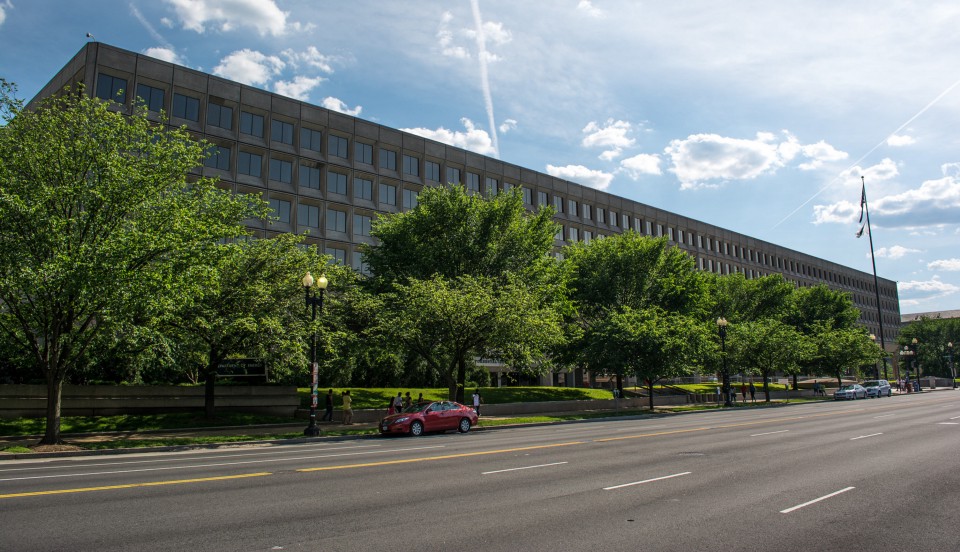The federal government is about to lose a ton of institutional memory.
By Jared Keller
(Photo: Drew Angerer/Getty Images)
Donald Trump’s transformation of the federal government will extend far beyond his cabinet.
So far, Trump has named 17 Senate-confirmable cabinet appointments, nominees who have roiled Washington circles for their perceived hostility to their own departments, lack of prior public service, and major conflicts of interest on a geopolitical scale. While names like Andrew Puzder and Rex Tillerson might garner all the headlines, there are still around 4,000 other political appointees who will take on leadership posts in the new administration come January. Those appointees will oversee a massive federal workforce of some 4.1 million civil servants, according to the Office of Personnel Management—civil servants who, as cogs in the federal government’s massive bureaucracy, are where the rubber hits the road when it comes to the actual exercise of governmental power in the United States.
The four- to eight-year turnover rate in such a massive bureaucratic apparatus creates a cycle of attrition and conflict, one exacerbated when the political appointees who actually make policy come from disparate ideological worlds.

The Forrestal Building, the Department of Energy headquarters. (Photo: Tim Evanson)
Take the current civil war brewing inside the Department of Energy: After the Trump transition team — which has vowed to dismantle Barack Obama’s landmark climate change programs — distributed a 74-point questionnaire to identify employees who worked on both foreign and domestic policies related to climate change, the bureaucrats within the department fought back, forcing the transition team to back off the survey.
Here’s how Department spokesman Eben Burnham-Snyder described the situation in his department in an email to the Washington Post:
The Department of Energy received significant feedback from our workforce throughout the department, including the National Labs, following the release of the transition team’s questions. Some of the questions asked left many in our workforce unsettled. Our career workforce, including our contractors and employees at our labs, comprise the backbone of DOE (Department of Energy) and the important work our department does to benefit the American people. We are going to respect the professional and scientific integrity and independence of our employees at our labs and across our department. …
We will be forthcoming with all publicly-available information with the transition team. We will not be providing any individual names to the transition team.
As precarious as the situation at the Department of Energy may seem, according to a new working paper from the National Bureau of Economic Research, it’s really just the beginning.
Looking at the effect of U.S. elections on ideology and turnover in the federal bureaucracy, researchers Alexander Bolton, David Lewis, and John de Figueiredo found that presidential elections result in increased turnover among more senior federal employees, “particularly in agencies whose views diverge from those of the new president,” as opposed to career bureaucrats. The end result is a major loss in institutional memory for federal agencies.
The research suggests it’s the “ideological mismatch” between the core administration and an agency — say, the belief that the Environmental Protection Agency is a nonsense agency as opposed to, well, working with the EPA — that’s strongly associated with higher rates of turnover. This phenomenon becomes more pronounced during the first few years of an administration (and suddenly collapses after re-election).
(Chart: National Bureau of Economic Research)
As the graph to the left shows, the ideological mismatch effect is more pronounced among those federal employees in close proximity to the incoming administration, namely senior executives who take the full brunt of the federal government’s about-face — say, the offices of those 4,000 appointed employees.
This means major shake-ups at the highest level of every agency. The NBER paper suggests that, the higher the mismatch score, and therefore the higher rate of ideological variance, the higher the rate of turnover.
For Republicans, this, of course, isn’t a bad thing. According to the Pew Research Center, Republicans tend to hold far less favorable views of individual federal government agencies than their Democratic or Independent counterparts. Keep in mind, this disdain applied to “agencies” in the abstract sense; 62 percent of the public approve of federal government workers.
And, for many of those workers, there could be trouble on the horizon. Make no mistake: The blow up at the Department of Energy is a sign of things to come.





